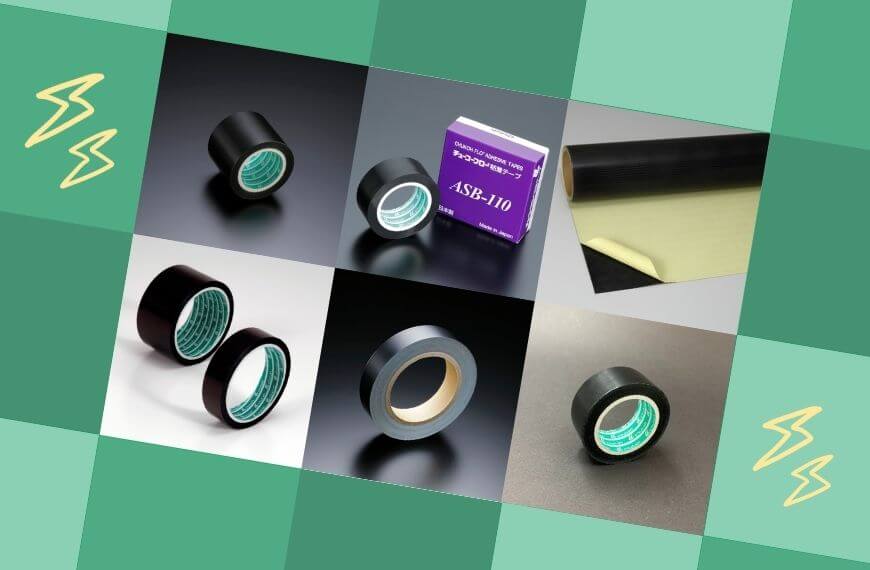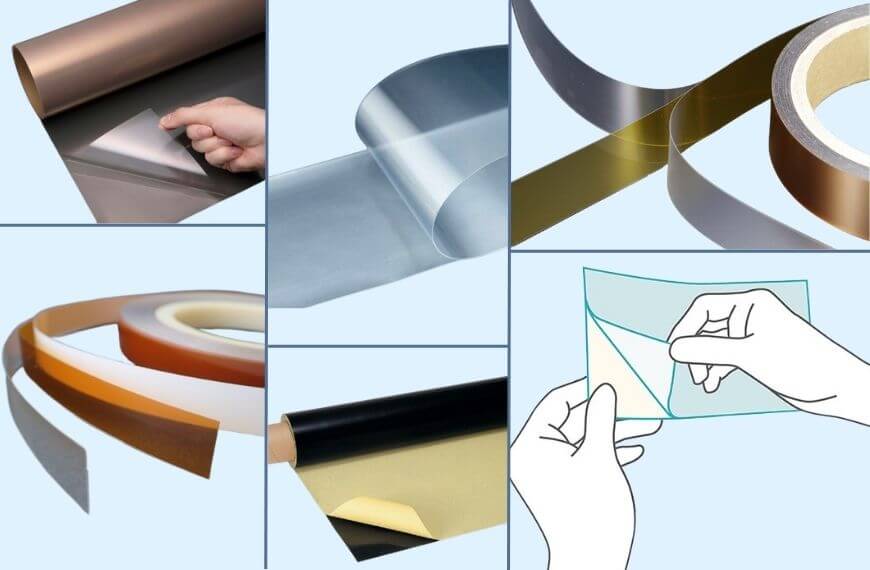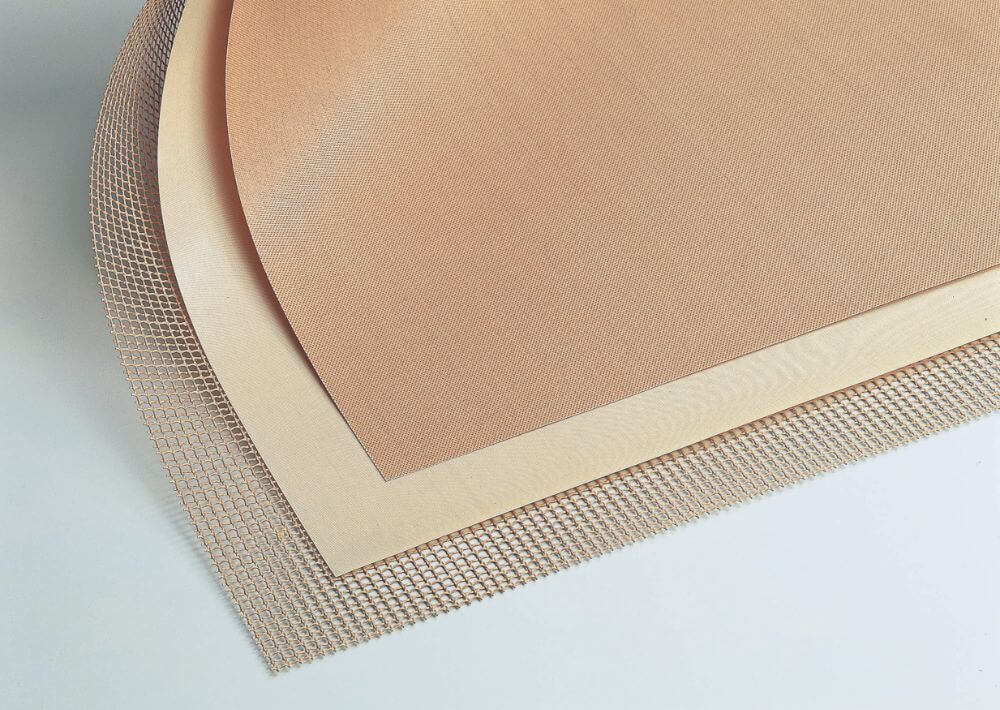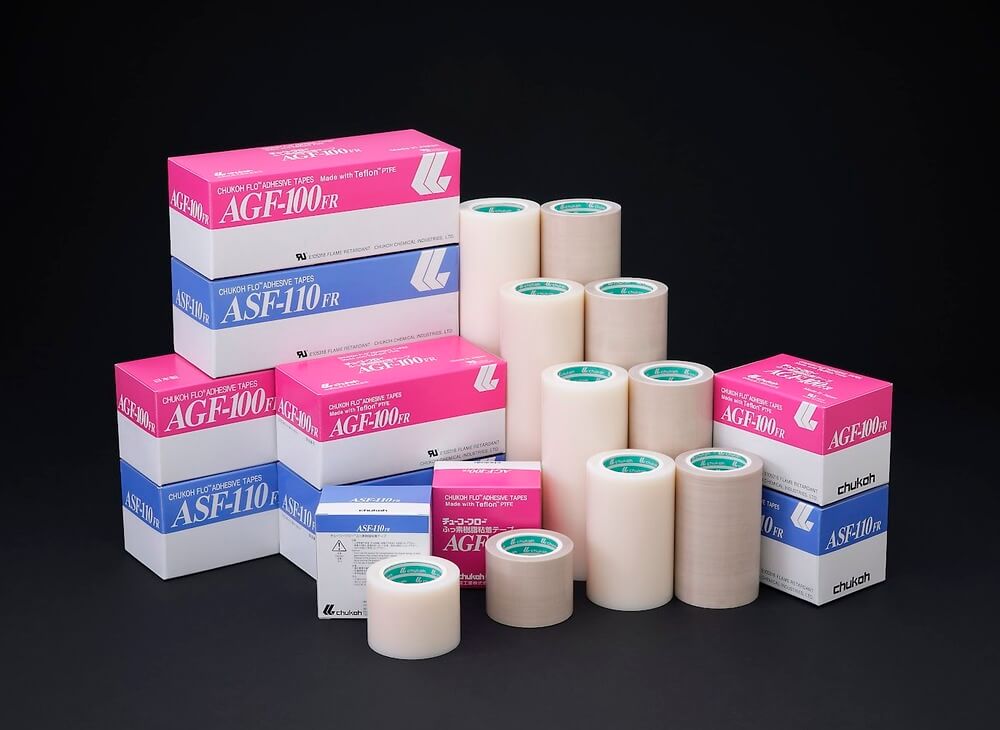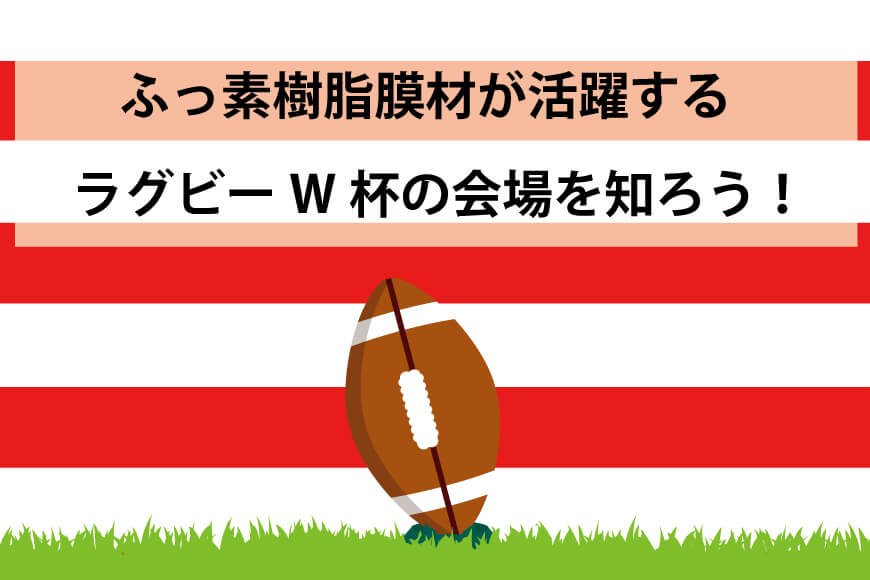
The 2019 Rugby World Cup in Japan will begin on September 20, 2019.
In the last tournament held in 2015, the Japanese national rugby team came from behind to beat the powerful South Africa, drawing attention from around the world as an "upset that will go down in sports history." Many people will feel even closer to rugby this year, as they will be able to watch the team's performance in their own country.
There is actually a deep connection between the 2019 Rugby World Cup and Chukoh Kasei.
Let's take a closer look!
What is the Rugby World Cup 2019 in Japan?
The 2019 Rugby World Cup will be held in Japan from September 20th to November 2nd, 2019. The Rugby World Cup is a world championship tournament held every four years to decide the world's best national rugby union team. It is said to be one of the three biggest sporting events in the world, along with the Summer Olympics and the FIFA World Cup.
This is the first time that the Rugby World Cup will be held in Japan, and also the first time that it will be held in Asia!
This also shows that rugby is steadily gaining recognition as a popular sport in Asia.
Where in Japan is it held?
Rugby World Cup 2019 matches will be held in 12 cities, from Hokkaido in the north to Kumamoto in the south.
There is no doubt that a rugby whirlwind will sweep the nation! Let's take a look at the stadiums in each city.
Sapporo Dome
Location: Sapporo, Hokkaido
Capacity: 41,410
URL: https://www.sapporo-dome.co.jp/index.html
Kamaishi Unosumai Memorial Stadium
Location: Kamaishi City, Iwata Prefecture
Capacity: 16,187
URL: https://kamaishi-stadium.jp/
Tokyo Stadium
Address: 376-3 Nishimachi, Chofu City, Tokyo 182-0032
Capacity: 49,970
URL: https://www.ajinomotostadium.com/
Yokohama International Stadium
Location: Yokohama, Kanagawa Prefecture
Capacity: 72,327
URL: https://www.nissan-stadium.jp/
Kumagaya Rugby Stadium
Location: Kumagaya City, Saitama Prefecture
Capacity: 24,000
URL: https://www.kumagaya-rugby.jp/rwc2019/
Ogasayama General Athletic Park Ecopa Stadium
Location: Fukuroi City, Shizuoka Prefecture
Capacity: 50,889
URL: https://www.ecopa.jp/
Toyota Stadium
Location: Toyota City, Aichi Prefecture
Capacity: 45,000
URL: https://www.toyota-stadium.co.jp/
Hanazono Rugby Stadium, Higashiosaka City
Location: Higashiosaka City, Osaka Prefecture
Capacity: 30,000
URL: http://hanazono-rugby-hos.com/
Kobe Misaki Park Stadium
Location: Kobe City, Hyogo Prefecture)
Capacity: 30,132
URL: https://www.noevir-stadium.jp/
Higashihirao Park Hakata no Mori Football Stadium
Location: Fukuoka City, Fukuoka Prefecture
Capacity: 22,563
URL: https://www.midorimachi.jp/
Oita Sports Park General Stadium
Location: Oita City, Oita Prefecture
Capacity: 40,000
URL: https://www.oita-sportspark.jp/facility/dome
Kumamoto Prefectural Athletic Park Athletics Stadium
Location: Kumamoto City, Kumamoto Prefecture
Capacity: 32,000
URL: http://www.kspa.or.jp/sougou/
Which venues use fluoroplastic roofing membrane materials?
Of the 12 stadiums where matches will be held, three will use fluoroplastic.
Let us introduce the features of each stadium and fluoroplastic roofing membrane materials!
Shizuoka Prefecture Ogasayama General Athletic Park Ecopa Stadium
Membrane material used: FGT-800
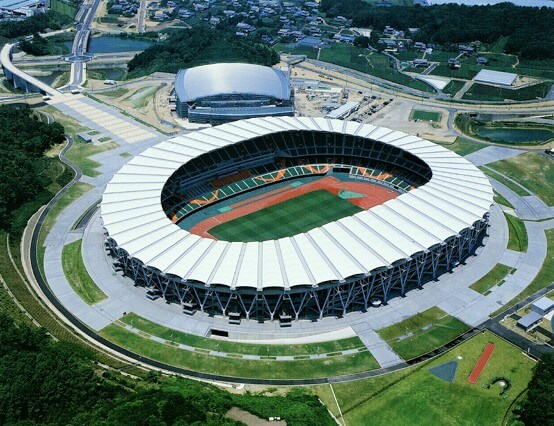
Located in Fukuroi City, Shizuoka Prefecture, the facility is owned by the Shizuoka Prefecture.
The field is made of natural grass all year round, allowing players to maintain excellent playing conditions.
The roof of the stand, made of fluoroplastic membrane material from Chukoh Kasei, was designed to resemble the Ogasayama mountain range. It covers all 45,653 fixed seats, allowing many spectators to watch the game in comfort even on rainy days.
Rugby World Cup 2019 match schedule (planned)
| schedule | Opponent |
|---|---|
| Saturday, September 28 | Japan v Ireland |
| Friday, October 4 | South Africa v Italy |
| Wednesday, October 9 | Scotland v Russia |
| October 13th (Sunday) | Australia v Georgia |
Fukuoka Prefecture Higashihirao Park Hakata no Mori Football Stadium
Membrane material used: FGT-800

Located in Higashi Hirao Park in Fukuoka City, Fukuoka Prefecture, it was built as the city's first stadium dedicated to soccer and rugby. It is also known as Level Five Stadium and is popular as the home stadium of the J-League team "Avispa Fukuoka." Chukoh Kasei's fluoroplastic roofing membrane material is used as the roofing material for the main stand and back stand.
The lighting is attached directly to the roof pillars that support the membrane, so there are no lighting poles to illuminate the stadium, allowing spectators to enjoy a wide field of vision.
Rugby World Cup 2019 match schedule (planned)
| schedule | Opponent |
|---|---|
| September 26th (Thursday) | Italy v Tonga |
| Wednesday, October 2 | France vs. America |
| Saturday, October 12 | Iceland vs Samoa |
Kumamoto Prefectural Athletics Stadium
Membrane material used: FGT-800
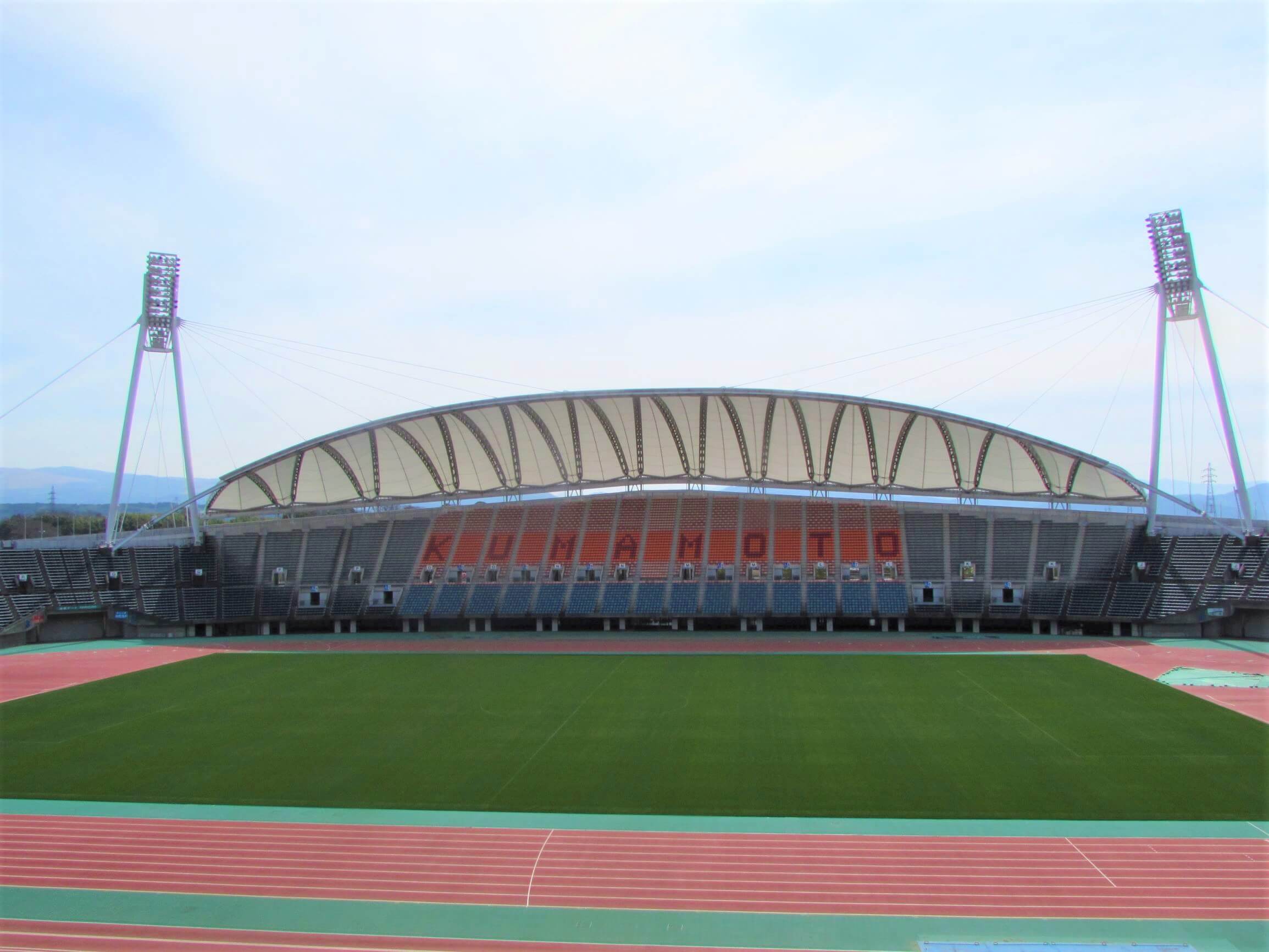
Located in Kumamoto Prefectural Athletic Park in Kumamoto City, Kumamoto Prefecture, it was completed in 1998 as the prefecture's largest multi-purpose stadium. It was chosen as the training camp site for the Belgian national team during the 2002 FIFA World Cup, and is currently used as the home stadium for the J-League team, Roasso Kumamoto.
By the way, Chukoh Kasei's fluoroplastic roofing membrane material is also used in Park Dome Kumamoto, the tennis courts, and the toilets located within the park.
Rugby World Cup 2019 match schedule (planned)
| schedule | Opponent |
|---|---|
| October 6th (Sunday) | France v Tonga |
| October 13th (Sunday) | Wales v Uruguay |
First of all, what is a fluoroplastic architectural membrane?
"fluoroplastic" is commonly known as "Teflon™" Many people may be familiar with the "fluoroplastic coating" and "Teflon™ coating" used on frying pans and other items. Chukoh Chemical Industries uses a unique method to soak industrial fluoroplastic into glass fiber cloth and bake it at high temperature. fluoroplastic "Architectural Roof Membrane Material (FGT Series)" We manufacture the following.
Its features include flame retardancy, stain resistance, and a weight of only 1,300g! *Weight is for FGT-800
Furthermore, compared to other roofing materials, it is strong yet flexible, making it easy to process into various shapes. It is also certified by the Minister of Land, Infrastructure, Transport and Tourism, so you can rest assured.
* Designated building materials as stipulated in Article 37, Clause 2 of the Building Standards Act and non-combustible materials as stipulated in Article 2, Clause 9 of the Building Standards Act
And amazingly, there are only three companies in the world, including fluoroplastic roofing membrane materials!
Furthermore, the only Japanese manufacturer is Chukoh Kasei!
Thanks to our high quality and technological expertise, fluoroplastic roofing membrane materials are trusted by architects and construction companies around the world.
Features of architectural roofing membrane materials (FGT series)
fluoroplastic have unique properties compared to other general plastics, such as heat resistance, Insulation, chemical resistance, lowest friction, non-stick characteristics, and Weatherability. The "Architectural Roofing Membrane Material (FGT Series)" manufactured by processing such fluoroplastic,
Property 1: Better strength to weight ratio than steel
Property 2: heat resistance can withstand temperatures of 700℃ to 800℃
Property 3: Weatherability, will not deteriorate even if exposed to UV rays for a long period of time
Property 4: Natural light reaches the interior, translucency
Property 5: non-stick characteristics resistant to dust and atmospheric dirt
Feature 6: water repellent performance, repels rain and washes away dirt
This roofing material has many features, such as the above. For more information, please see the product information page.
fluoroplastic materials are also used in other sports stadiums!
Research into architectural roofing membrane materials (FGT series) began in 1972, and production began around 1980. In addition to the stadiums selected for the Rugby World Cup 2019 in Japan, the material has also been used in buildings both in Japan and overseas.
The total number is over 1,000!
Here we will introduce fluoroplastic roofing membrane materials specifically for sports facilities.
Domestic
Tokyo Dome (inner membrane)
Yomiuri Giants home stadium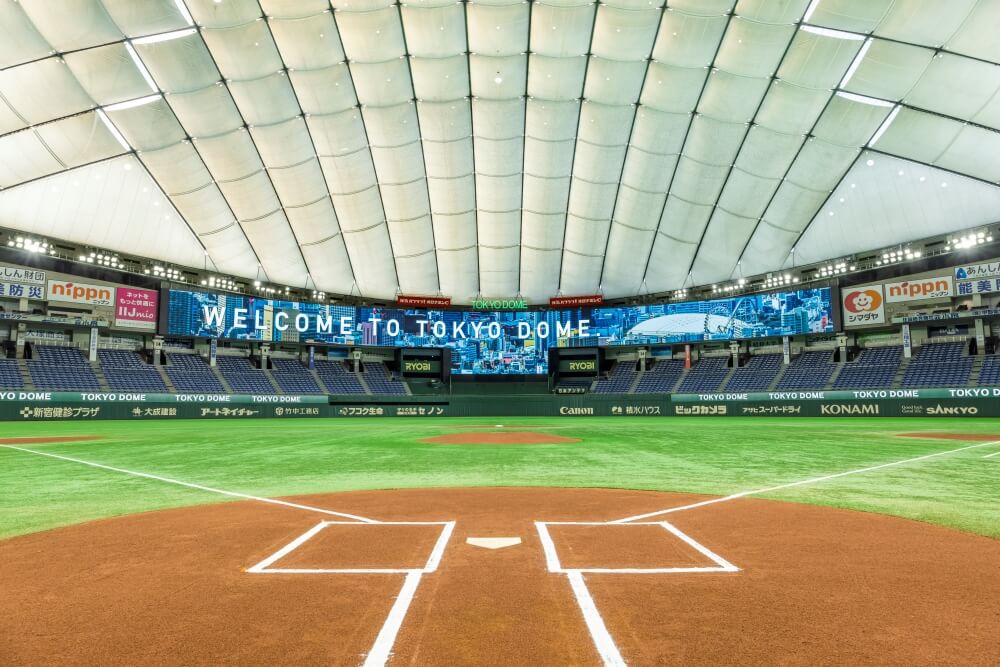
Saitama MetLife Dome (bird-proof membrane)
Seibu Lions home stadium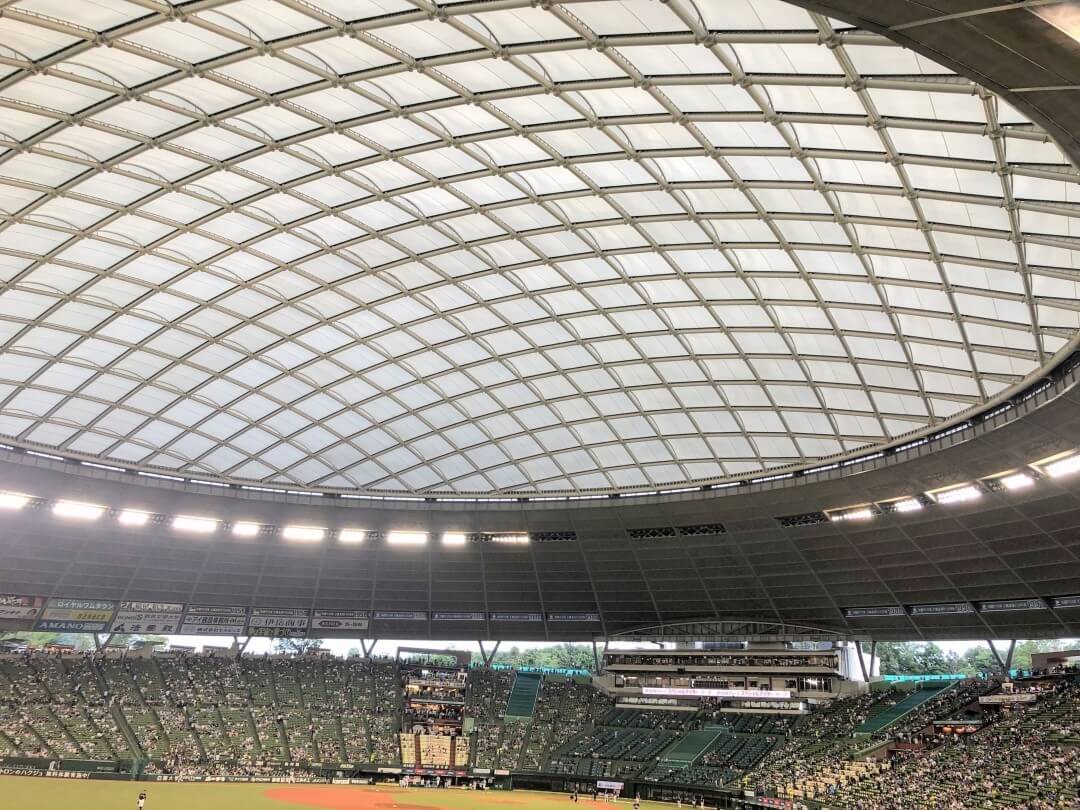
Nagoya Dome, Aichi Prefecture (shading film)
Chunichi Dragons home stadium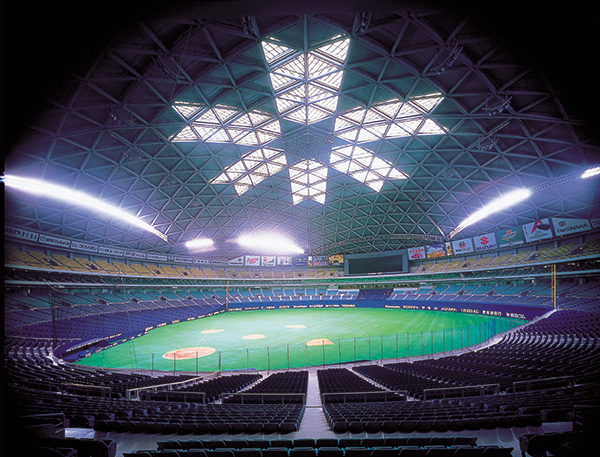
Nagasaki Prefectural Comprehensive Athletic Park Athletics Stadium
V-Varen Nagasaki home stadium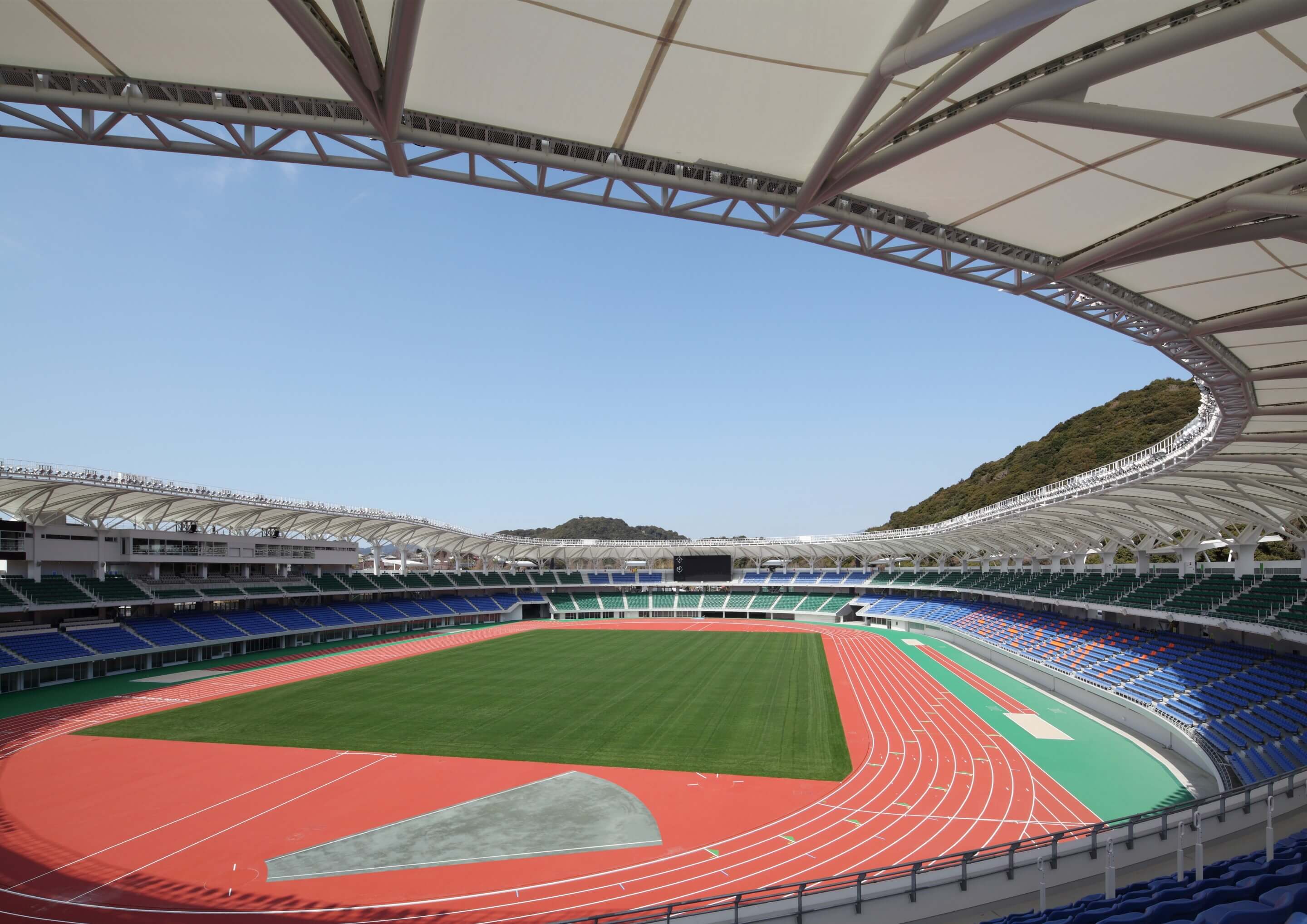
Ibaraki Prefecture Ibaraki Prefectural Kashima Soccer Stadium
Kashima Antlers home stadium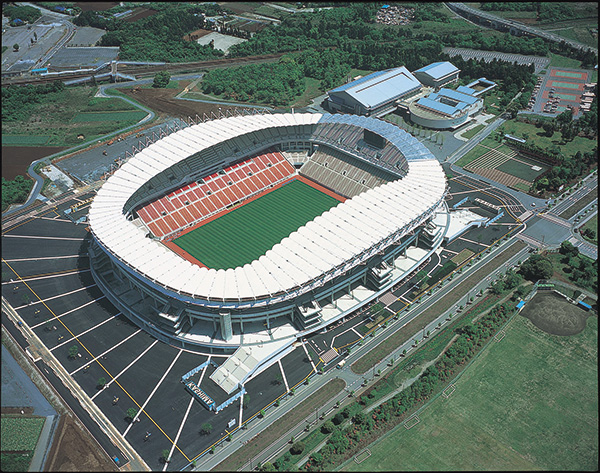
Fukushima Prefecture J Village
National Football Training Center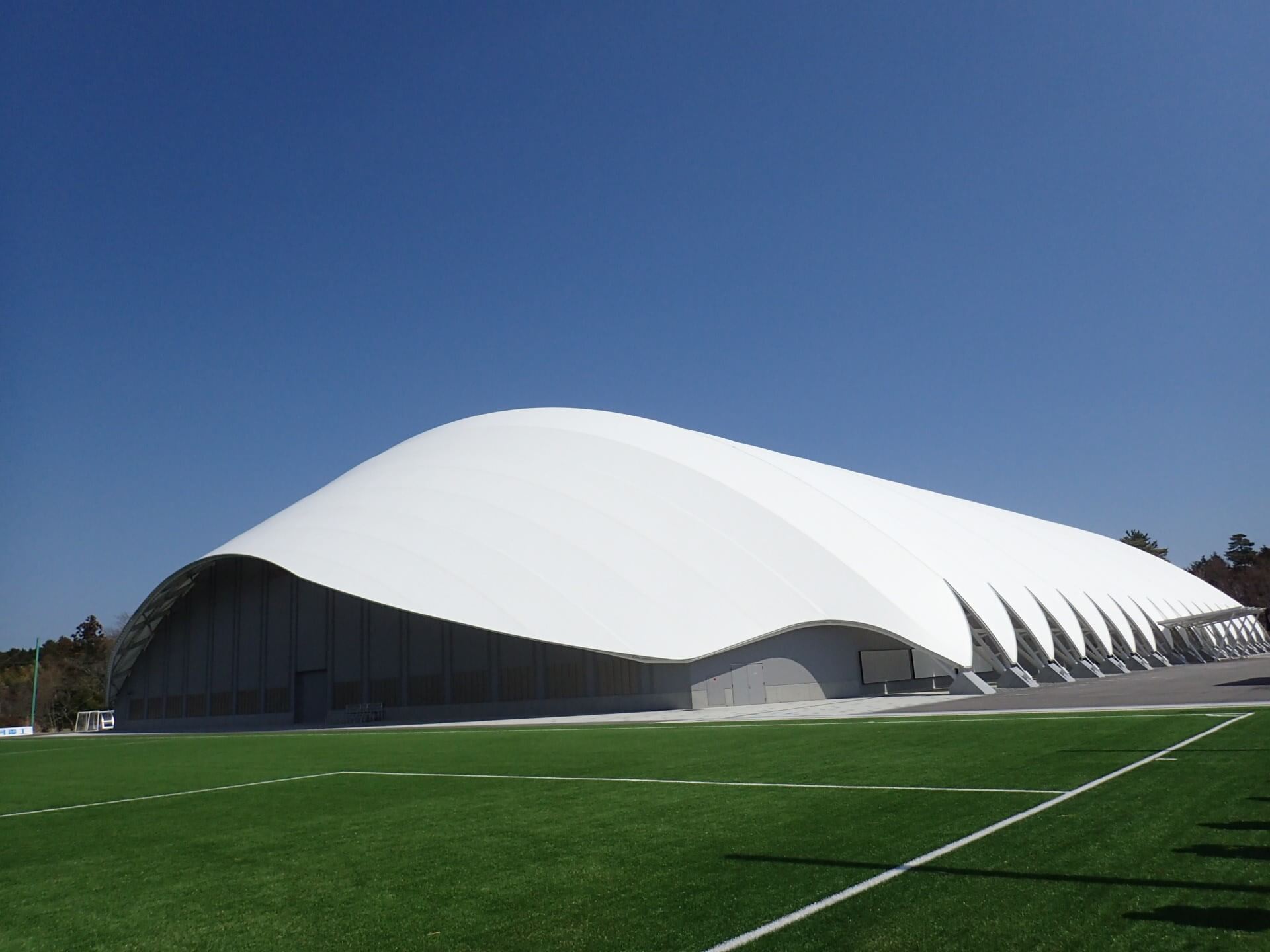
Miyazaki Prefecture KURISHIMA Konohana Dome
Yomiuri Giants Spring Training Facility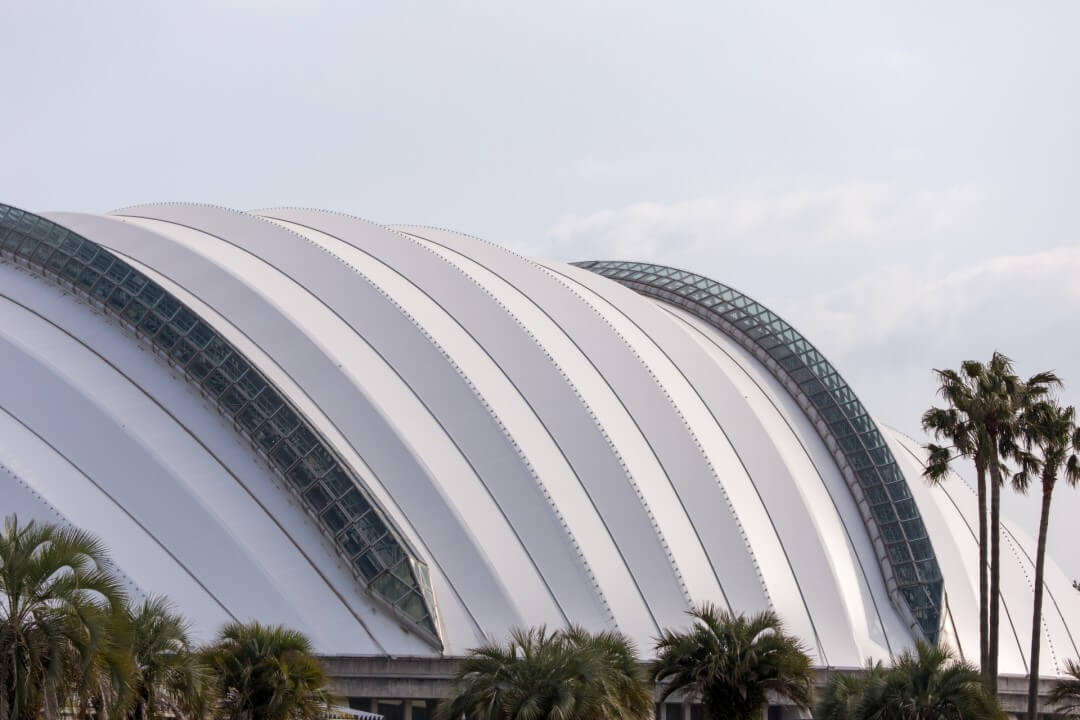
Okinawa Prefecture Ginoza Dome
Hanshin Tigers Spring Training Facility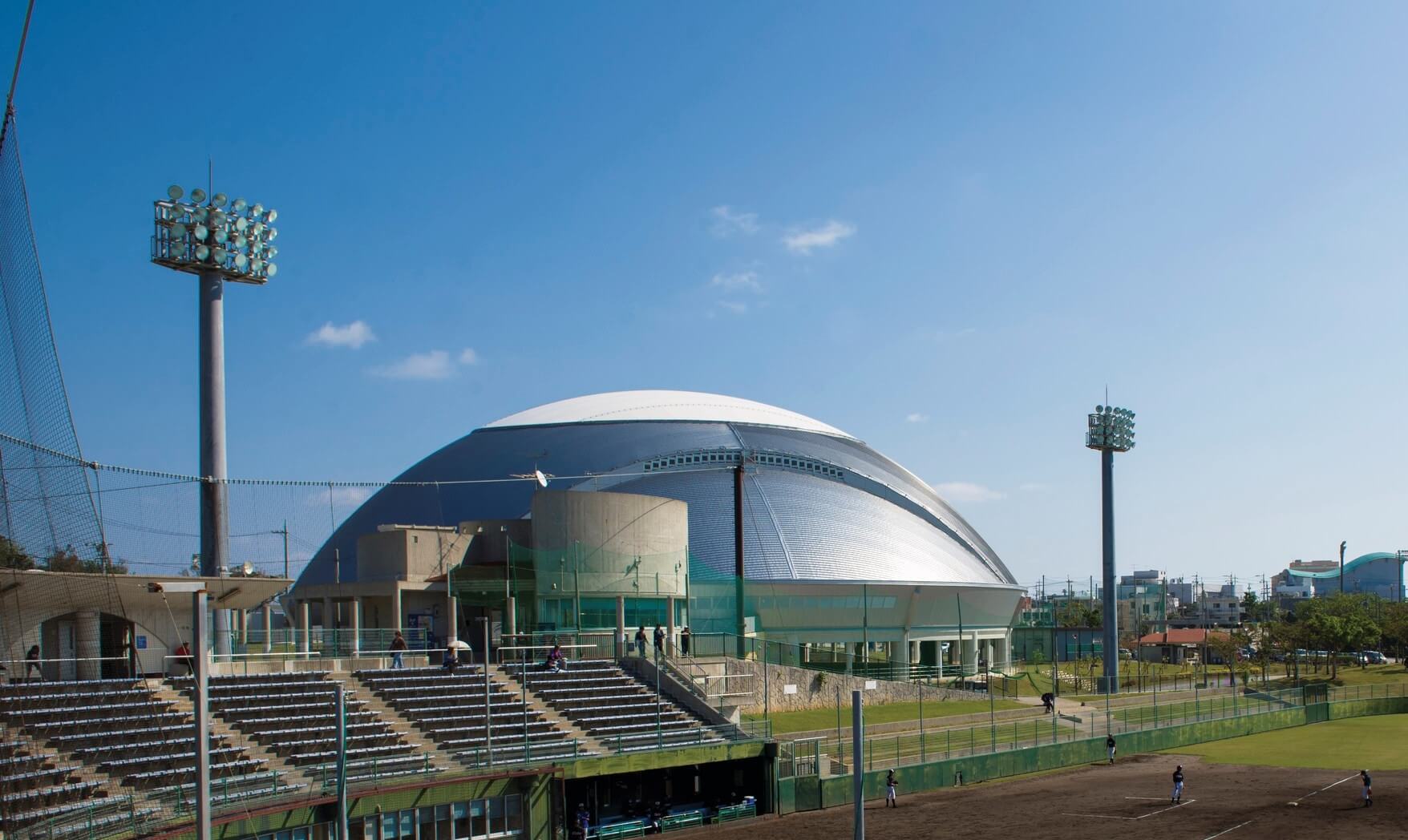 ©OCVB
©OCVB
abroad
Australia Perth Stadium
Rugby and cricket facilities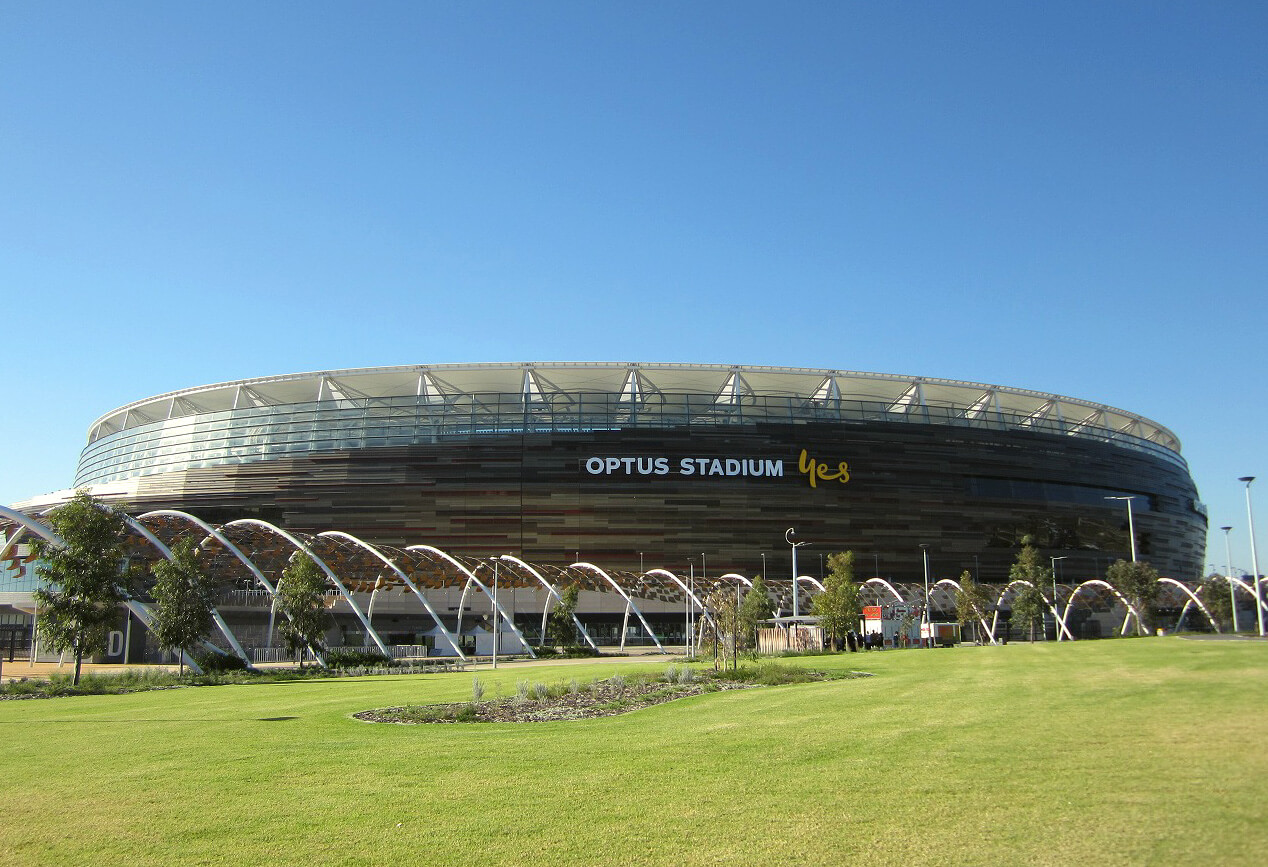
South Korea Jeju World Cup Stadium
Japan-Korea World Cup Venue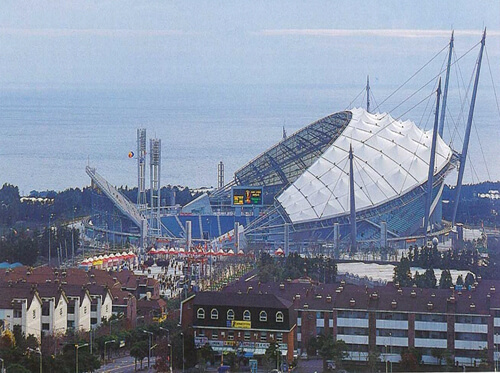
Republic of South Africa Nelson Mandela Bay Stadium
South Africa World Cup Venue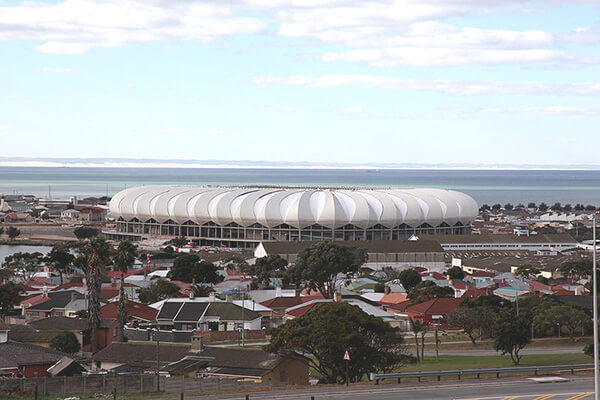
chinese bird nest
Beijing Olympics Main Venue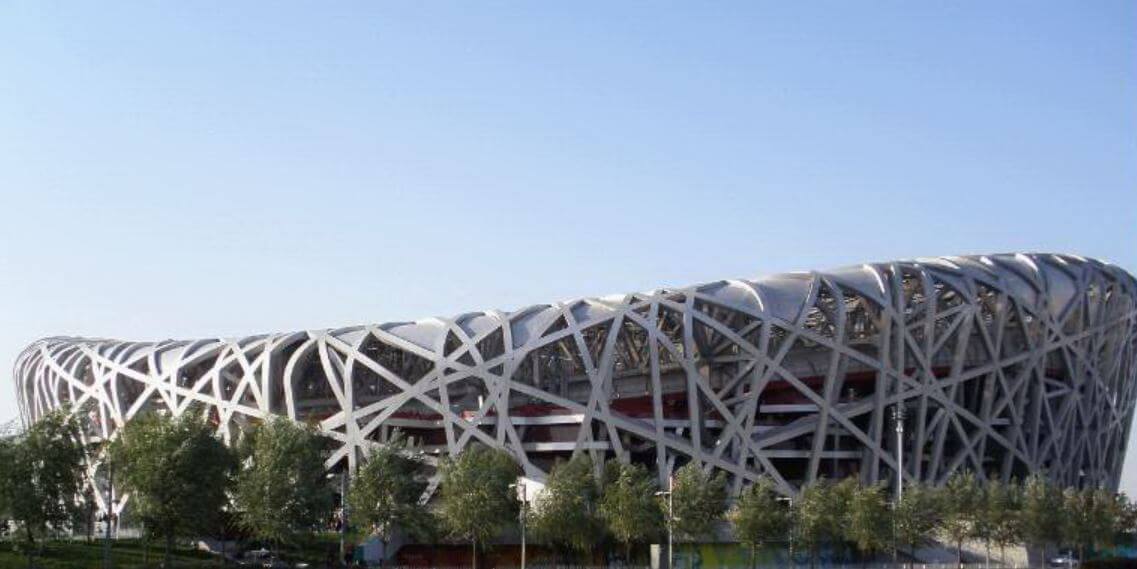
If you would like to know more, please visit our recruitment page.
>>Click here for other recruitment results
Let's liven up the Rugby World Cup 2019 in Japan!
The 2019 Rugby World Cup in Japan will see 20 teams from around the world compete in 12 cities, with rugby players from each country competing for honor. Many rugby fans will also be visiting Japan.
"fluoroplastic architectural roofing membrane material" watches over the fierce battles and enthusiastic support.
Just like the athletes, Chukoh Kasei will continue to manufacture fluoroplastic architectural roofing membrane materials with the same passion, technical expertise it has cultivated over the years, and pride in the quality that can only be found in Japanese products!
*We do not carry out installation work. If you are interested in the FGT series, please feel free to contact us and we will introduce you to an installation company.































